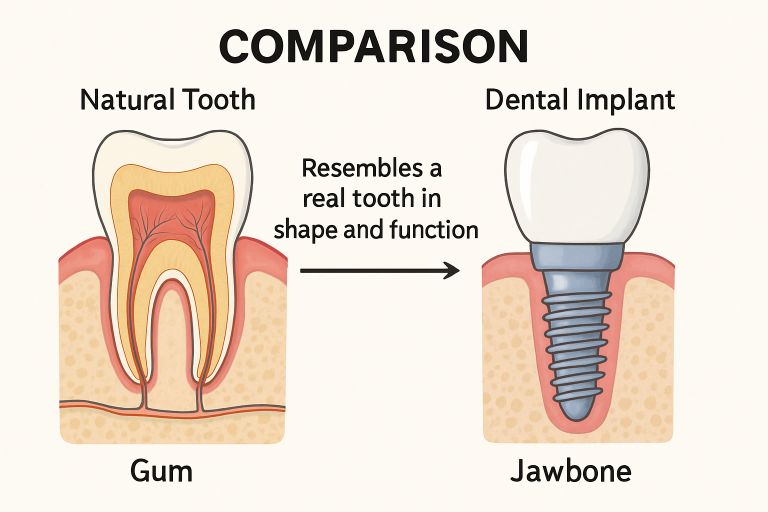Key Takeaways
- Modern dental implants provide natural-looking and durable tooth replacements.
- Technological advancements have led to minimally invasive procedures with faster recovery times.
- Innovations like 3D imaging and smart implants enhance precision and long-term success.
Table of Contents
- Introduction
- Enhanced Aesthetics and Functionality
- Minimally Invasive Procedures
- Advanced Imaging and Planning
- Smart Implants with Real-Time Monitoring
- Improved Materials and Osseointegration
- Faster Recovery and Healing Times
- Long-Term Durability and Success Rates
- Conclusion
Introduction
Modern dental implant technology has transformed oral healthcare, providing patients with solutions that restore appearance and function. With rapid innovations in materials, surgical techniques, and digital tools, patients seeking tooth replacement now enjoy greater confidence, comfort, and long-term oral health. For those considering all-on-4 dental implants, these advancements offer even more compelling benefits—ranging from minimally invasive approaches to innovative implant systems that proactively monitor oral health.
Today’s dental implants improve facial aesthetics and provide a strong and natural bite, often indistinguishable from real teeth. Dentists can deliver highly personalized results by harnessing new technologies like 3D imaging and titanium-zirconia blends. These modern features improve patient outcomes, from faster recovery to increased implant longevity.
Beyond aesthetics, advances in dental implant technology now focus on patient-centered experiences. Less invasive procedures, accelerated healing, and digital treatment planning mean patients experience less discomfort and greater satisfaction. The surge in high-tech solutions, such as real-time monitoring, ensures early intervention and reduces risks commonly associated with traditional implants.
Modern dental implants additionally empower patients with lifelong benefits, including stronger self-esteem and better oral hygiene practices. For further reading about trends in dental technology, see Scientific American’s overview of dental technology.
Enhanced Aesthetics and Functionality
One of the most appreciated advantages of modern dental implants is their remarkable ability to replicate the look and feel of natural teeth. Each implant is meticulously customized in shape, color, and translucency to blend seamlessly with surrounding teeth, resulting in a natural and confident smile. Beyond aesthetics, their advanced engineering ensures optimal functionality, restoring whole biting and chewing efficiency. This allows patients to comfortably enjoy a wide variety of foods that may have once been difficult to eat with missing or damaged teeth. Combining precision design with durable materials, dental implants offer beauty and practicality, enhancing comfort, confidence, and overall quality of life.
Minimally Invasive Procedures
The latest surgical techniques now focus on minimizing tissue damage and accelerating recovery. Methods such as computer-guided implant placement and flapless surgery require fewer incisions, which reduces both swelling and the risk of infection. Because these approaches preserve more gum and bone tissue, they not only lower discomfort but also lead to better aesthetic and functional results over time. Many patients appreciate returning to their regular routines sooner than was possible with older methods.
Advanced Imaging and Planning
Digital dentistry has greatly enhanced treatment precision through advanced imaging technologies such as Cone Beam CT (CBCT) scans. This 3D imaging innovation provides dentists with highly detailed views of a patient’s oral anatomy, including bone density, nerve pathways, and surrounding tissues. By enabling virtual simulations of implant procedures before surgery, clinicians can plan each step with exceptional accuracy and confidence. This preoperative insight helps reduce potential risks, streamline the surgical process, and improve patient outcomes. As a result, every dental implant can be positioned with optimal stability and integration, ensuring both functional success and long-term aesthetic satisfaction for patients.
Smart Implants with Real-Time Monitoring
One of the most remarkable breakthroughs in dental implantology is the arrival of smart implants equipped with miniature sensors. These systems can gather and transmit data such as bite force, temperature, and bacterial activity directly to clinicians. Early detection of issues like excessive pressure or inflammation means doctors can intervene promptly, helping prevent bone loss or implant failure. Patients benefit from peace of mind, knowing their implant health is being monitored continuously.
Improved Materials and Osseointegration
Innovations in biomaterials have yielded stronger, safer, and more versatile implant options. Titanium remains the gold standard due to its biocompatibility and resilience, but alternative materials like zirconia offer a metal-free solution for those with sensitivities. Both materials benefit from advanced surface treatments that speed up osseointegration—the biological bonding of implant to bone—leading to sturdier, longer-lasting results. For more on cutting-edge dental materials, see Scientific American: Synthetic Enamel Could Make Teeth Stronger and Smarter.
Faster Recovery and Healing Times
With the integration of minimally invasive surgical techniques and regenerative treatments like platelet-rich plasma, recovery after dental implant placement is now quicker than ever. These advances reduce discomfort and enable a rapid return to normal eating and speaking. In many cases, patients with sufficient bone can even receive immediate-load implants, completing their restoration in a single day—a process once considered impossible.
Long-Term Durability and Success Rates
Dental implants are regarded as a lasting investment in oral health and overall well-being. Modern advancements—such as digital treatment planning, bioactive implant surfaces, and real-time monitoring—have revolutionized precision and outcomes, resulting in success rates that consistently surpass 95% over the long term. Unlike traditional bridges or dentures that may require frequent replacements, implants are engineered for lifelong durability when properly maintained. They help preserve bone structure, improve bite function, and enhance aesthetics, making them a superior and cost-effective choice for tooth replacement. Ultimately, today’s dental implants combine science, technology, and design to deliver a permanent, reliable, natural-feeling solution for missing teeth.
Conclusion
Recent breakthroughs in dental implant technology have transformed how individuals regain confidence in their smiles, offering advantages far beyond cosmetic appeal. Modern techniques now emphasize precision and patient comfort, with minimally invasive procedures that reduce recovery time and discomfort. Integrating advanced biomaterials improves strength, biocompatibility, and longevity, while innovative monitoring systems enable better post-procedure care and long-term success. These innovations restore natural function and support oral and overall health by preserving bone structure and preventing further deterioration. As dentistry advances, these cutting-edge developments promise healthier, more radiant smiles that last a lifetime.



